When it comes to natural pest control and sustainable gardening, few allies are as beneficial as the humble ladybug (also known as ladybird beetle). These colorful, spotted beetles are not just charming to look at — they play a crucial role in maintaining a healthy garden ecosystem. A single ladybug can eat up to 50 aphids a day and hundreds more during its lifetime, making it a natural and chemical-free way to protect your plants.
But how do you attract ladybugs to your garden, and how can you encourage them to stay? In this comprehensive article, we’ll explore why ladybugs are valuable, what attracts them, and practical steps you can take to create a ladybug-friendly garden.
Why Are Ladybugs Good for the Garden?
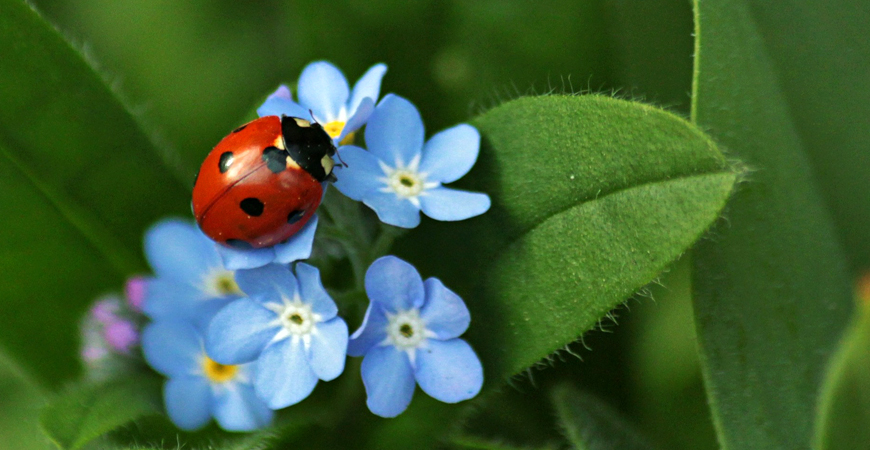
Before discussing how to invite them, it’s important to understand their role:
- Natural Pest Control: Ladybugs feed on aphids, mealybugs, scale insects, mites, and other soft-bodied pests that damage plants.
- Pollination Assistance: While feeding on pollen and nectar, ladybugs inadvertently help with pollination.
- Chemical-Free Solution: Encouraging ladybugs reduces the need for synthetic pesticides, promoting a safer, more organic garden.
- Indicators of Garden Health: A thriving ladybug population often signals a balanced ecosystem.
What Attracts Ladybugs to a Garden?
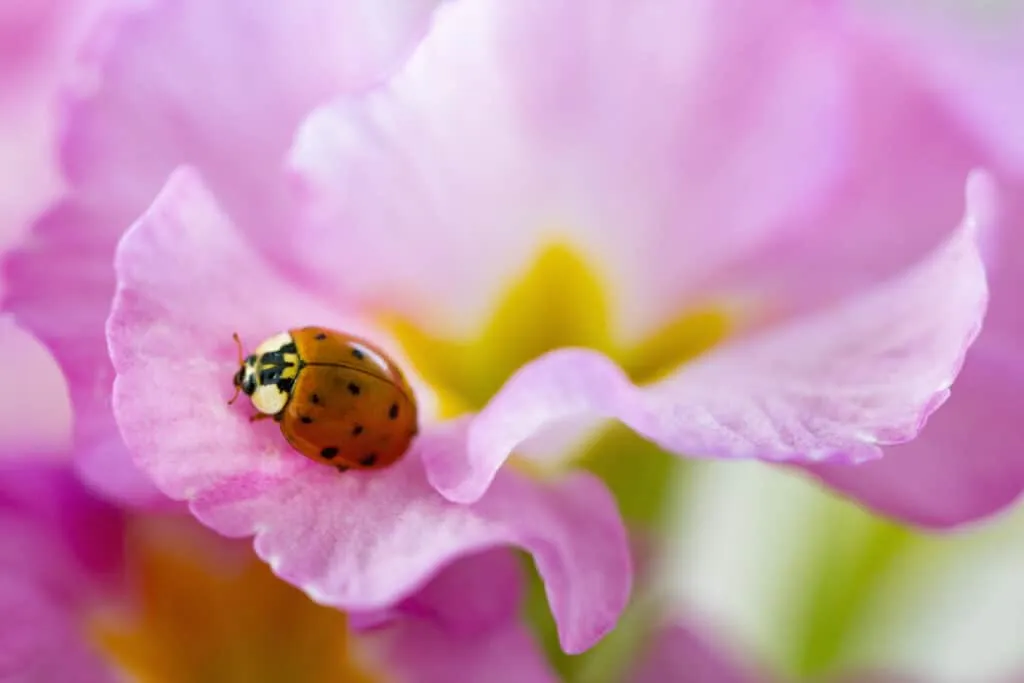
Like all creatures, ladybugs are drawn to environments where their basic needs — food, water, and shelter — are met. Here’s what typically lures them in:
- An abundant food source (aphids, mites, and other pests)
- Nectar and pollen-producing flowers
- Moisture and shelter from extreme temperatures
- Safe, pesticide-free environments
Understanding these preferences will help you design a space ladybugs won’t want to leave.
How to Attract Ladybugs to Your Garden: Step-by-Step
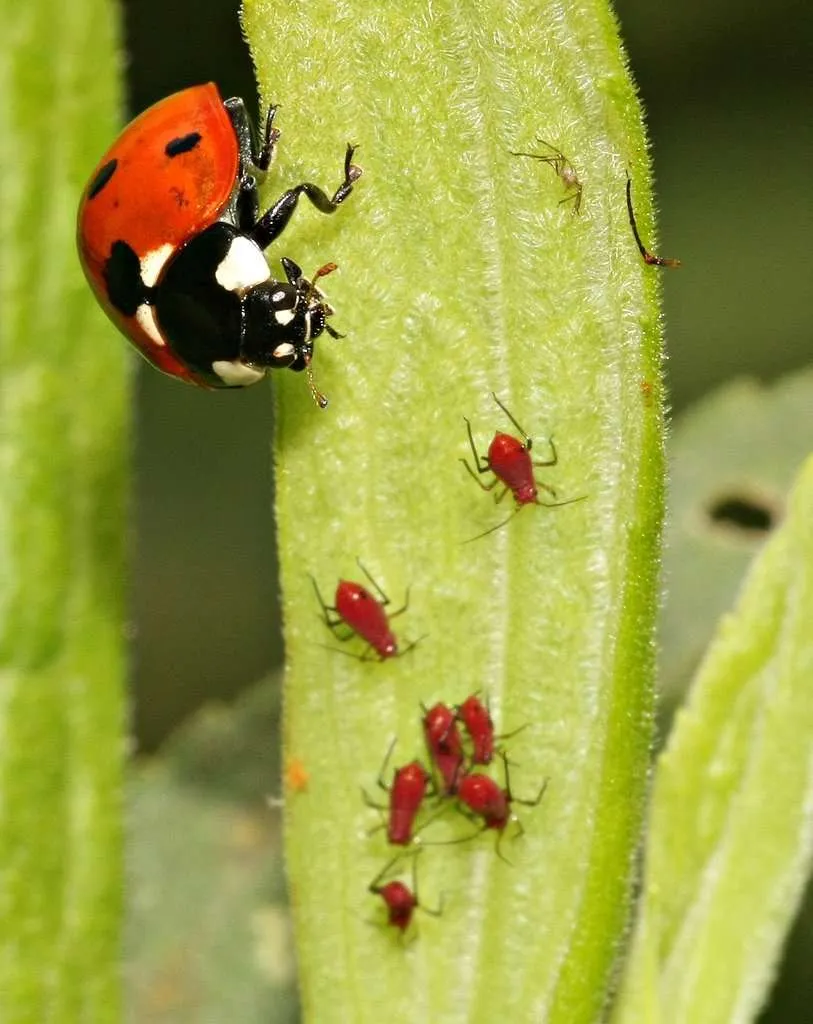
Grow Plants That Ladybugs Love
Ladybugs are naturally drawn to certain plants that provide nectar, pollen, or attract their favorite prey (like aphids). Planting these varieties increases your chances of welcoming them:
Flowering Herbs and Plants:
- Dill
- Fennel
- Cilantro
- Chives
- Yarrow
- Marigold
- Calendula
- Tansy
- Alyssum
- Angelica
Tip: Interplant these alongside your vegetables, roses, and fruit trees to naturally boost ladybug visits.
Provide a Steady Food Supply
Ladybugs need a reliable source of soft-bodied pests. While it may seem counterintuitive, don’t aim for a pest-free garden. A few aphids and mites help keep ladybugs around.
Common Prey:
- Aphids
- Mealybugs
- Spider mites
- Whiteflies
- Scale insects
Tip: Avoid using chemical pesticides that kill both pests and beneficial insects.
Maintain a Pesticide-Free Environment
Most synthetic insecticides are non-selective, harming both harmful and beneficial insects. Ladybugs are especially sensitive to chemical sprays.
Alternatives:
- Use organic pest control methods like neem oil or insecticidal soap in targeted areas.
- Handpick pest infestations.
- Encourage natural predators like birds, lacewings, and predatory beetles alongside ladybugs.
Offer Water and Shelter
Ladybugs need hydration and protection from harsh sun and wind.
Ways to Help:
- Mist plants lightly in the early morning.
- Provide shallow water dishes filled with pebbles for them to land on.
- Grow dense shrubs, ground covers, or install small insect hotels as refuge spots.
Buy and Release Ladybugs (Carefully)
If your garden lacks ladybugs, you can purchase them from reputable garden suppliers. However, it’s essential to release them properly for them to stay.
Steps for Releasing:
- Release in the evening when temperatures are cooler.
- Lightly mist plants beforehand for hydration.
- Release ladybugs at the base of infested plants.
- Avoid letting them go during hot, windy, or dry conditions.
Note: Wild ladybugs tend to be more effective and sustainable in the long term, so improving garden conditions to attract them naturally is ideal.
Add Mulch and Leaf Litter
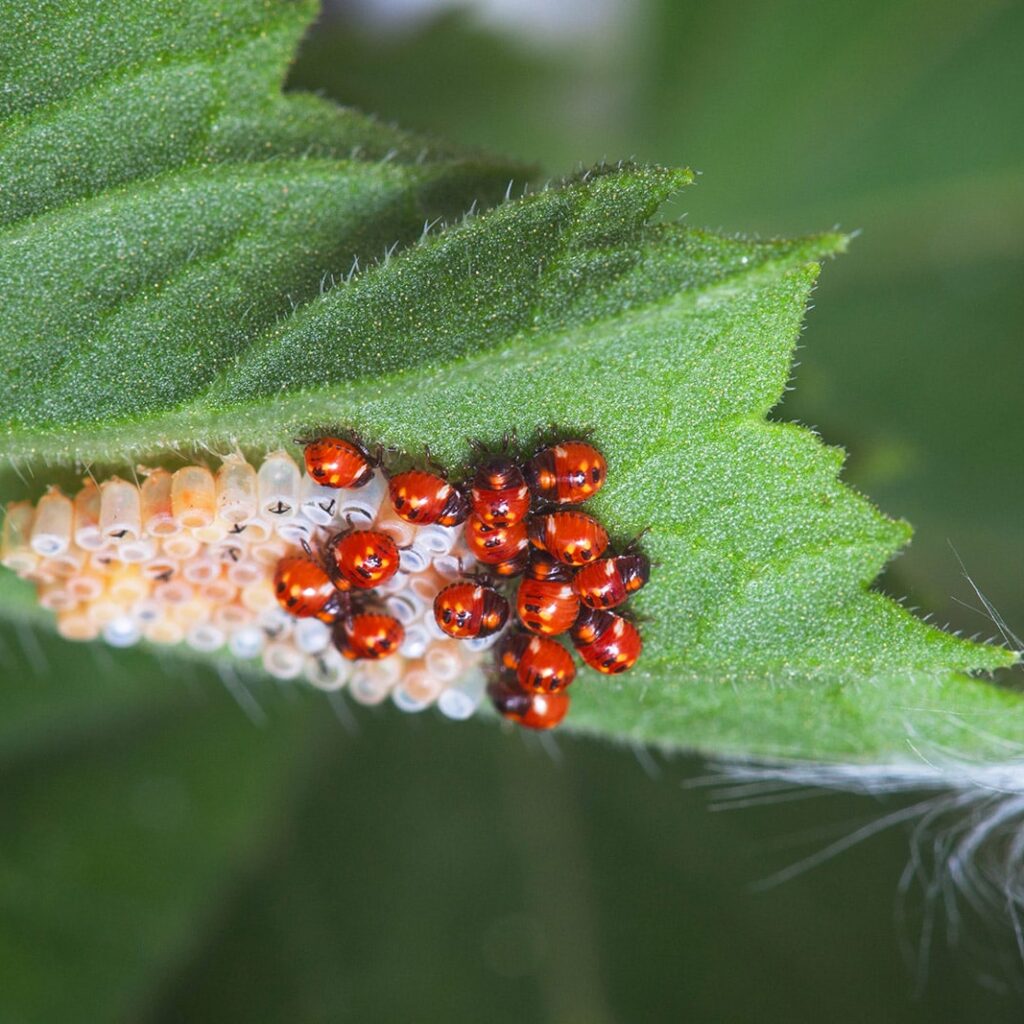
Ladybugs often hide in mulch and leaf debris during hot afternoons and overwinter in sheltered spots.
Tip: Leave a thin layer of organic mulch or keep a natural garden corner with leaves and twigs where ladybugs can find shelter year-round.
Grow Companion Plants
Use companion planting to encourage beneficial insects while protecting vulnerable crops.
Example Pairings:
- Plant dill and fennel near tomatoes to attract ladybugs that will consume aphids and hornworms.
- Grow marigolds alongside cucumbers and squash to repel pests and invite ladybugs.
- Alyssum under fruit trees serves as a nectar-rich ground cover that draws in ladybugs.
Signs That Ladybugs Have Moved In
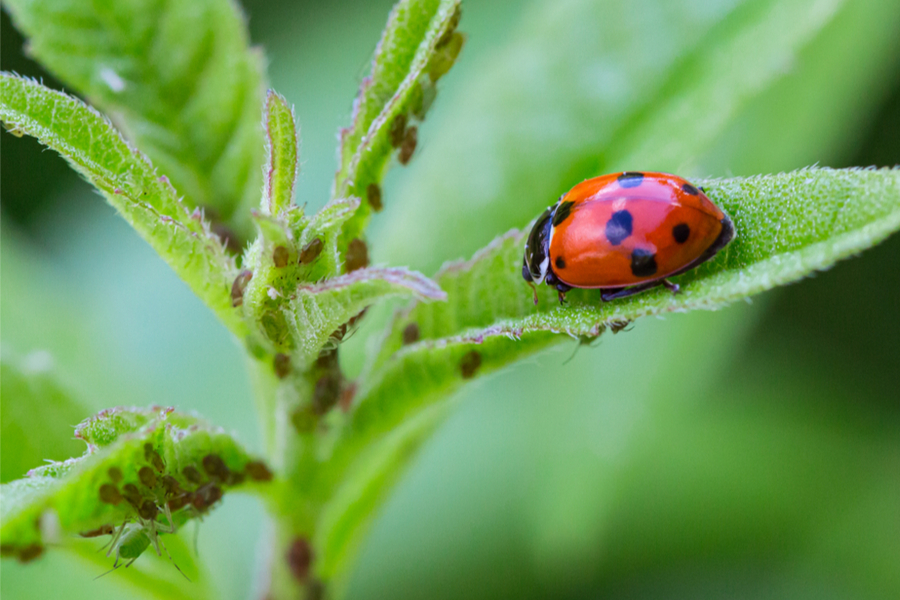
You’ll know your efforts are working if you notice:
- Small clusters of orange-yellow eggs on plant undersides.
- Larvae (black, alligator-shaped, with orange markings) crawling on leaves.
- Less noticeable aphid populations.
- Adult ladybugs frequently spotted in flowers and on leaves.
Benefits of a Ladybug-Friendly Garden
Beyond pest control, creating a ladybug-friendly garden has multiple rewards:
- Reduced pesticide use, promoting environmental health.
- Improved pollination, thanks to ladybugs visiting flowers.
- A more diverse and balanced insect population.
- Healthier, more resilient plants due to fewer pest outbreaks.
Common Challenges and Solutions
Ladybugs Leaving Quickly:
Ensure there’s enough food (aphids, nectar plants), water, and shelter. Avoid over-pruning plants they hide in.
Predators and Competition:
Minimize frequent pesticide use and create hiding spots to protect ladybugs from predatory birds and aggressive insects.
Lack of Ladybugs in Urban Areas:
Increase plant diversity, avoid chemicals, and source ladybugs from trusted organic nurseries if needed.
Conclusion
How can you attract ladybugs to your garden?
By planting nectar-rich flowers, providing prey like aphids, creating a pesticide-free environment, and ensuring water and shelter, you can transform your garden into a thriving habitat for these beneficial beetles. Whether you’re maintaining a vegetable patch, flower bed, or pollinator haven, ladybugs offer a natural, effective solution to pest control while supporting biodiversity.
A garden filled with ladybugs is a healthy, balanced ecosystem — one where natural predators, beneficial insects, and lush plant life coexist beautifully.
So, the next time you spot a ladybug in your garden, remember — it’s not just good luck, it’s a sign you’re doing something right.





